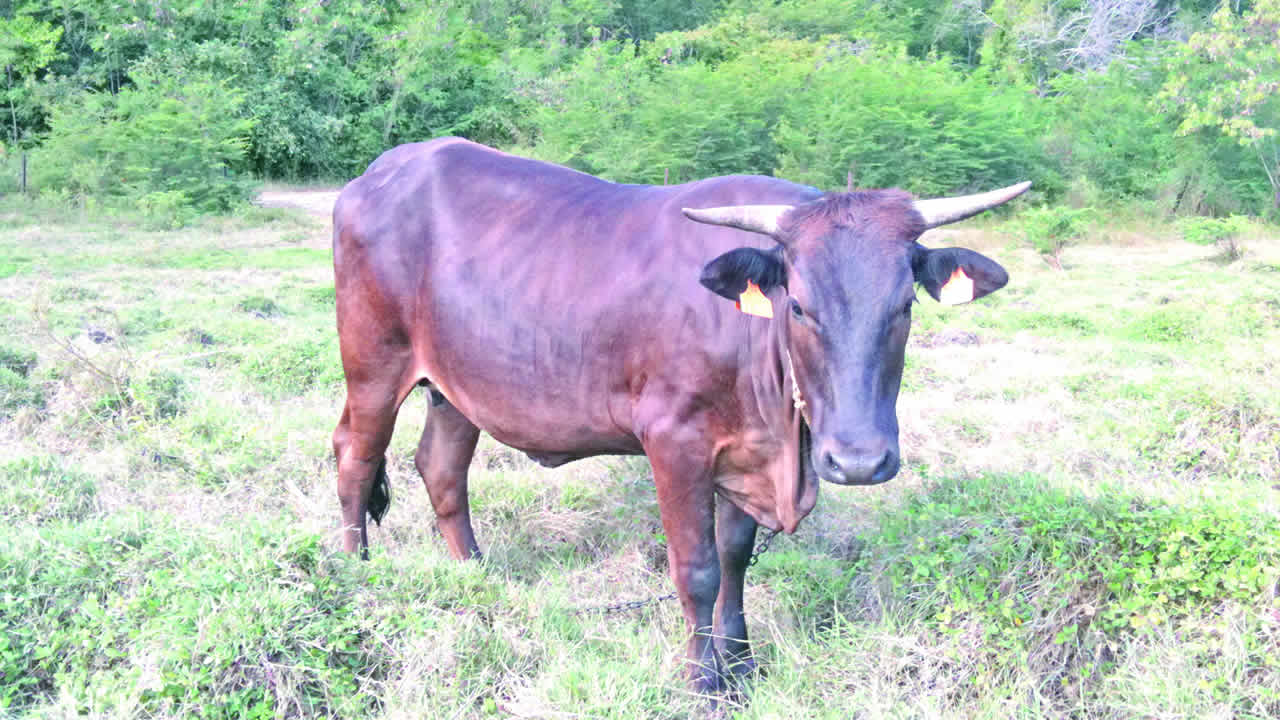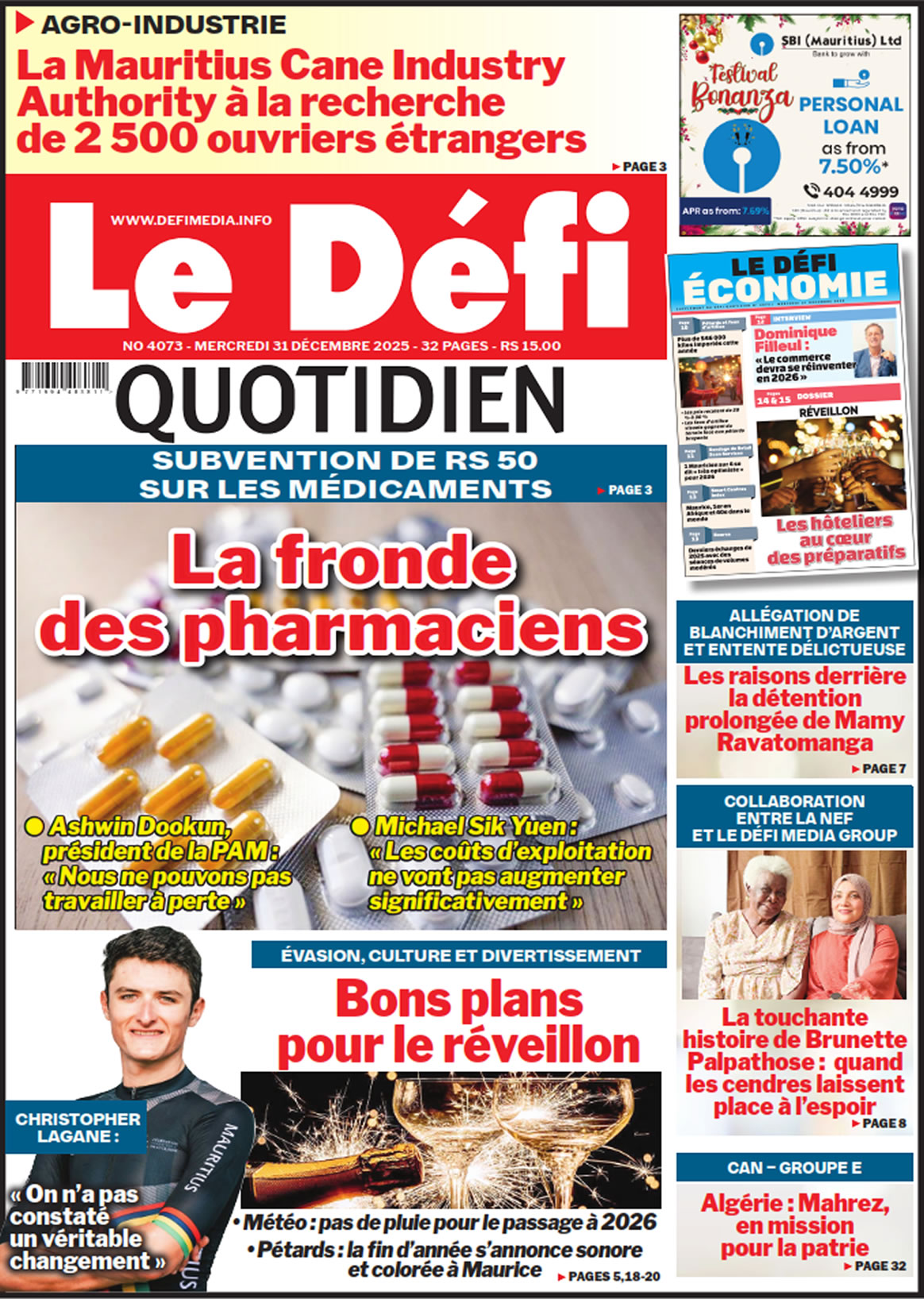
On the occasion of World Animal Day celebrated on Wednesday 4 October, experts in the animal sector in Mauritius raised the issue of the Creole cattle that is critically diminishing in number as the years go by. They were accounted for more than 30,000 during colonial days but after the severe cyclones of 1960, Alix and Carol, it was decided to import more from Africa and Australia to the detriment of the local breed that was left on its own and to-day, they are numbered less than 25,000.
Global Plan of Action (GPA) for Animal Genetic Resources
Sustainable use, development and conservation of the world’s livestock genetic resources are of paramount importance to agriculture, food production, rural development and the environment. In recognition of the need to develop an effective framework for the management of these resources and to address the threat of genetic erosion, 109 countries came together in September 2007 at the first International Technical Conference on Animal Genetic Resources for Food and Agriculture held in Interlaken, Switzerland.
The Conference adopted the Global Plan of Action for Animal Genetic Resources – which includes 23 strategic priorities for action to promote the wise management of these vital resources. One of the actions of the GPA is the setting up of Continental Focal Point, Regional Focal Point and National Focal Point.
SADC Sub Regional Focal Point
The Sub regional Focal Point for the sustainable utilization of Animal Genetic Resources in the southern African Countries (SADC) has been set up in 2014 in Botswana. The decisions taken at the General Assembly are implemented by a Steering Committee.
The Steering Committee consists of 13 members comprising four Member States, one Breeders Association, two RECs, one sub-regional R&D institution, one NGO and four technical partners. Currently the member states are South Africa, Lesotho, Mauritius and Swaziland as well as one Breeders Association, SADC, COMESA, CCARDESA, Heifer International, AU-IBAR, FAO, ILRI and RUFORUM.
4th General Assembly and Steering Committee on Animal Genetic Resources in the SADC Region
Mauritius has been chosen as the hosting country of the general assembly. Participants comprise National Coordinators from Southern Africa (SADC) Member States, Sub-Regional Research Organization (CCARDESA), International Livestock Research Institutions (ILRI), Civil Society and Non-state Organization (Heifer International).
The 4th General Assembly of the SADC region was held this week, Monday 9 October at the Palm Hotel of Quatre Bornes with the participation of more than 20 sub-saharan representatives.
In his inaugural speech the Minister of Agro-Industry, Mahen Seeruttun, emphasized: “For the first time, the conservation of local genetic resources has been included in strategies of the Government, as spelt out in the Strategic Plan 2016-2020 wherein emphasis is being laid on conservation and utilization of Animal Genetic Resources. In this respect, a programme is being implemented specifically for the conservation of the local Creole cattle.
This breed used to be the most important cattle breed in Mauritius during the 1960s with a population of 33,000 heads and representing 77% of the local herd. Today, statistics reveal that apart from the nucleus herd of 48 heads that is being maintained at FAREI Livestock Research Station, there are only 45 heads at farm level.
I am also pleased to inform that the private sector is collaborating in the conservation programme and a Memorandum of Understanding has been signed between CASELA and FAREI with the objective of promoting conservation strategies through awareness creation on issues related to conservation and utilization of Animal Genetic Resources.
The Minister also underlined the necessity for the Conservation and Sustainable Utilization of African Animal Genetic Resources: “We recognize the importance of sustainable use of Animal Genetic Resources for the development of livestock production to meet the future challenges, as mentioned in the Global Plan of Action – GPA – for Animal Genetic Resources.
We also acknowledge that the formulation of appropriate livestock policies, strategies and legislations is a major concern in looking forward for the improvement of livestock development.”
He added that Mauritius being a net food importer relies heavily on exporting countries and therefore, “we welcome initiatives aiming at improving food security in the region. In fact, although we are almost self-sufficient in poultry and venison, we produce only 3% of our requirement in milk and dairy products and 10% of our requirement for red meat.
Our reliance on import put us at risk with respect to disease threats. This threat has further been exacerbated by the high level of trans-boundary movement of livestock and livestock products.”
“Regarding policies and strategies, I must concede that past strategies to boost up the livestock sector did not produce the expected results, on the contrary the population of cattle has been declining over the years and that of goat has been stagnating. It is worth noting that previous policies have mostly favoured the importation of improved genetics which, unfortunately, did not adapt to local conditions and resulted in further decline in the cattle population.”
Breeding Programmes
“We recognize the difficulties to develop breeding programmes with a small population, but we also endeavor to safeguard our local genetics.
In this respect, a sub-committee of the livestock Policy Hub has been set up to work on a livestock breeding policy. This policy will be integrated in the ‘Livestock Production Bill’, that is currently being drafted and which will include a component for the conservation and utilization of local AnGR.
In the same vein, I understand that there have been several initiatives to support the setting up of livestock information and traceability system as a monitoring tool and that there were some issues associated with the use of existing system such as ARIS 2.
During the management of the FMD last year, the lack of a proper and reliable database has been greatly felt. In this context, we are in the process of setting up a ‘National Animal Identification System’.”
The Minister congratulated experts for the work that has been accomplished so far, especially with the dedicated staff of AU-IBAR, the Secretariat, National Coordinators, associations and experts who have endeavored to ensure that Africa is not left behind in the global thrust to achieve sustainable utilization and conservation of these very important genetic resources and that they will be better prepared to address the threat of climate change, considering the important role that indigenous genetic resources will play in terms of resilience to this challenge.
The meeting ended on Wednesday 11 October with the adoption of a communiqué and closing remarks on the way forward. In Mauritius the stakeholders – government, private sector as well as breeders - are looking forward for the presentation of the ‘Livestock Production Bill’ in Parliament to know further of steps to be taken for the preservation of the Creole cattle.
It should be noted that the Creole cattle has a better production capacity of milk than imported cows, can resist from diseases and parasites and can better adapt to local harsh climate such as drought and heat.







